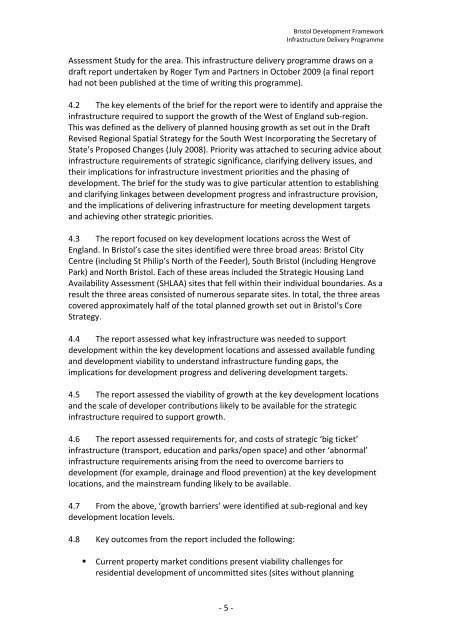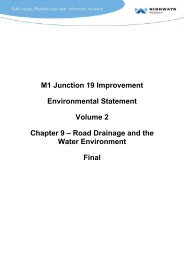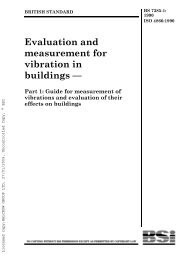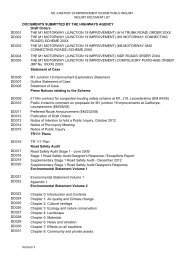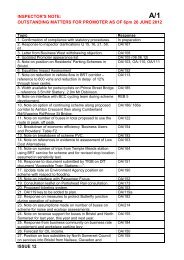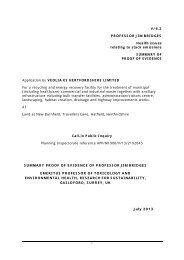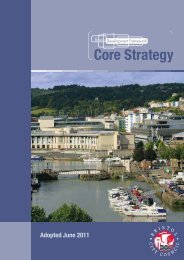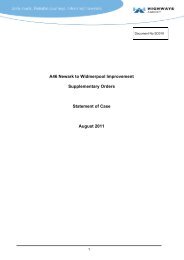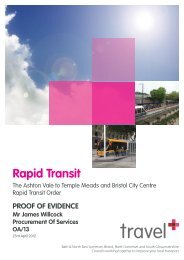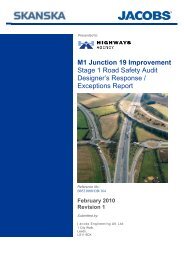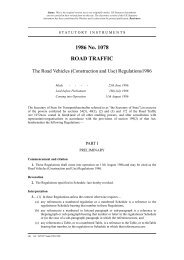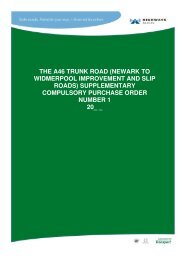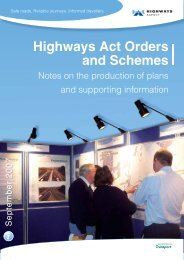Bristol Development Framework Infrastructure Delivery Programme
Bristol Development Framework Infrastructure Delivery Programme
Bristol Development Framework Infrastructure Delivery Programme
You also want an ePaper? Increase the reach of your titles
YUMPU automatically turns print PDFs into web optimized ePapers that Google loves.
<strong>Bristol</strong> <strong>Development</strong> <strong>Framework</strong><br />
<strong>Infrastructure</strong> <strong>Delivery</strong> <strong>Programme</strong><br />
Assessment Study for the area. This infrastructure delivery programme draws on a<br />
draft report undertaken by Roger Tym and Partners in October 2009 (a final report<br />
had not been published at the time of writing this programme).<br />
4.2 The key elements of the brief for the report were to identify and appraise the<br />
infrastructure required to support the growth of the West of England sub‐region.<br />
This was defined as the delivery of planned housing growth as set out in the Draft<br />
Revised Regional Spatial Strategy for the South West Incorporating the Secretary of<br />
State’s Proposed Changes (July 2008). Priority was attached to securing advice about<br />
infrastructure requirements of strategic significance, clarifying delivery issues, and<br />
their implications for infrastructure investment priorities and the phasing of<br />
development. The brief for the study was to give particular attention to establishing<br />
and clarifying linkages between development progress and infrastructure provision,<br />
and the implications of delivering infrastructure for meeting development targets<br />
and achieving other strategic priorities.<br />
4.3 The report focused on key development locations across the West of<br />
England. In <strong>Bristol</strong>’s case the sites identified were three broad areas: <strong>Bristol</strong> City<br />
Centre (including St Philip’s North of the Feeder), South <strong>Bristol</strong> (including Hengrove<br />
Park) and North <strong>Bristol</strong>. Each of these areas included the Strategic Housing Land<br />
Availability Assessment (SHLAA) sites that fell within their individual boundaries. As a<br />
result the three areas consisted of numerous separate sites. In total, the three areas<br />
covered approximately half of the total planned growth set out in <strong>Bristol</strong>’s Core<br />
Strategy.<br />
4.4 The report assessed what key infrastructure was needed to support<br />
development within the key development locations and assessed available funding<br />
and development viability to understand infrastructure funding gaps, the<br />
implications for development progress and delivering development targets.<br />
4.5 The report assessed the viability of growth at the key development locations<br />
and the scale of developer contributions likely to be available for the strategic<br />
infrastructure required to support growth.<br />
4.6 The report assessed requirements for, and costs of strategic ‘big ticket’<br />
infrastructure (transport, education and parks/open space) and other ‘abnormal’<br />
infrastructure requirements arising from the need to overcome barriers to<br />
development (for example, drainage and flood prevention) at the key development<br />
locations, and the mainstream funding likely to be available.<br />
4.7 From the above, ‘growth barriers’ were identified at sub‐regional and key<br />
development location levels.<br />
4.8 Key outcomes from the report included the following:<br />
• Current property market conditions present viability challenges for<br />
residential development of uncommitted sites (sites without planning<br />
‐ 5 ‐


